Loading...
Products
Magic: The Gathering Line
Deck Box Type
Lorcana, Disney’s highly anticipated foray into trading card games, was released on August 18, and I’ve enjoyed the game so far. In Lorcana, players take on the role of Illumineers who use magical ink to summon glimmers of iconic Disney characters, songs and items. There are six colors of ink, with Constructed decks limited to a maximum of two. Out of the 21 total ink combinations to explore, there are three ready-to-play starter decks, which were fairly evenly matched.
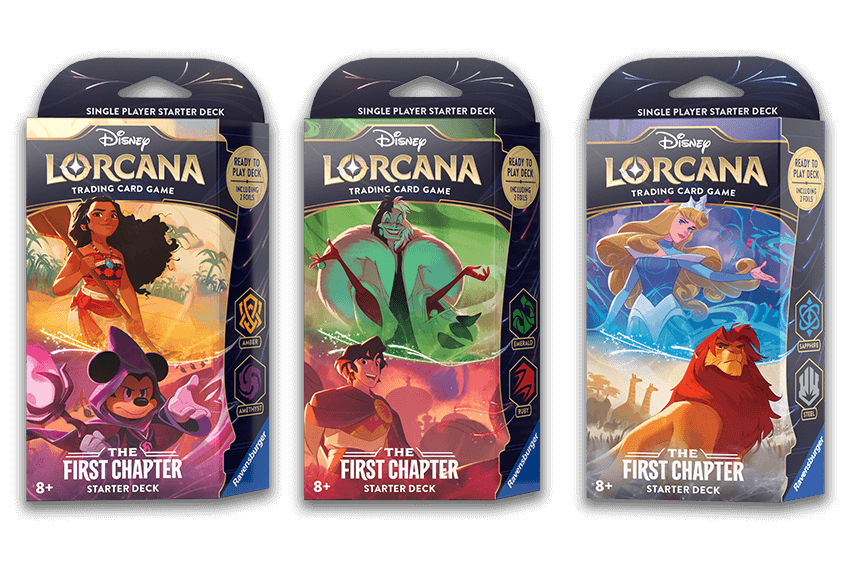
The objective of the game is to use your characters to gather 20 lore, and the first player to do so wins. You begin the game with a hand of seven cards and draw a new card each turn, except on the first turn for the starting player. Once per turn, you may turn a card with an inkwell symbol from your hand into face-down ink, becoming a resource that you can turn sideways to summon characters
You use 60-card decks in Constructed, 40-card decks in Limited, and the official website has an excellent "how to play" section. Overall, there are a lot of similarities to Magic: The Gathering, and I felt like my competitive Magic experience gave me an advantage in picking up Lorcana on the release weekend.
My first impression was that Lorcana is easy to learn but hard to master. It’s less deep than Magic, but the gameplay is solid, and the core mechanics provide a lot of opportunity for future card designs. I’ve enjoyed the decisions on mulligans, inking, challenging, sequencing, and so on. Moreover, based on my first tournament results, I felt like I had a good grasp on the game. With that in mind, let me share five general gameplay tips that have brought me success thus far.
Before the game begins, each player can take a single "mulligan" by putting any number of cards from their starting hand on the bottom of their library and redrawing that many cards. In deciding which cards to put on the bottom and which ones to keep, my main strategy thus far has been to assemble an "ink curve".
Referring to a character costing N ink as an N-drop, the dream is to achieve a curve with a one-drop on turn one, a two-drop on turn two, a three-drop on turn three, and so on before running out of cards. In my experience thus far, the player who spends more ink to affect the board than
their opponent in the early turns is usually the player who emerges victoriously. To maximize the probability of perfect curve-outs, I’ve generally mulliganed duplicate ink costs, keeping the best of each drop and bottoming the rest.
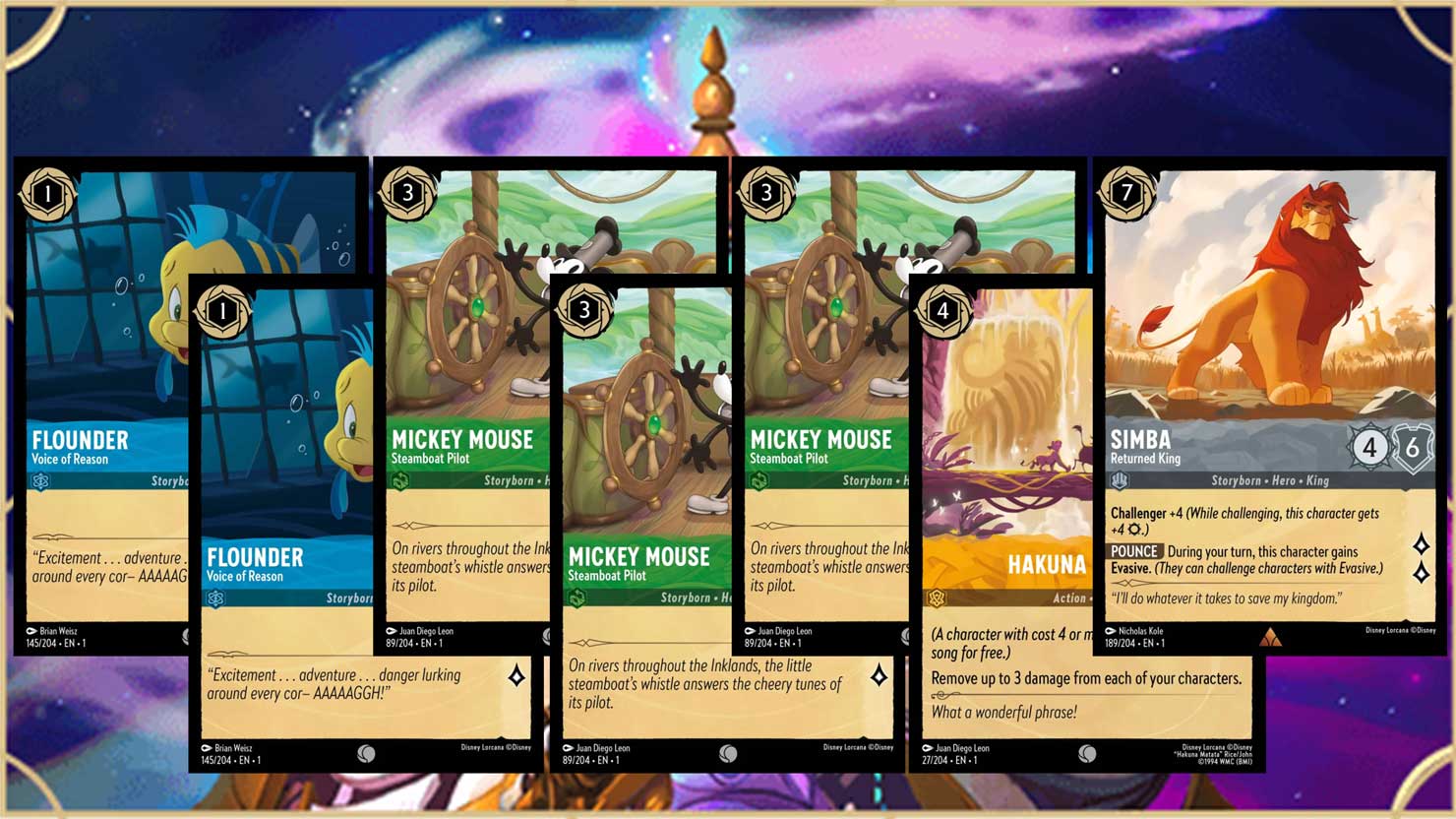
For example, if my starting hand has two one-drops, three three-drops, a fancy item or action card, and a seven-drop, then I will usually keep one one-drop and one three-drop and bottom the other five. By redrawing five cards in search of a two-drop and four-drop, I maximize the probability to hit the crucial early spots on my curve. Even if the cards I bottom might be very powerful in the late game, I’ve found early board control to be crucial, and I have been mulliganing aggressively with that in mind.
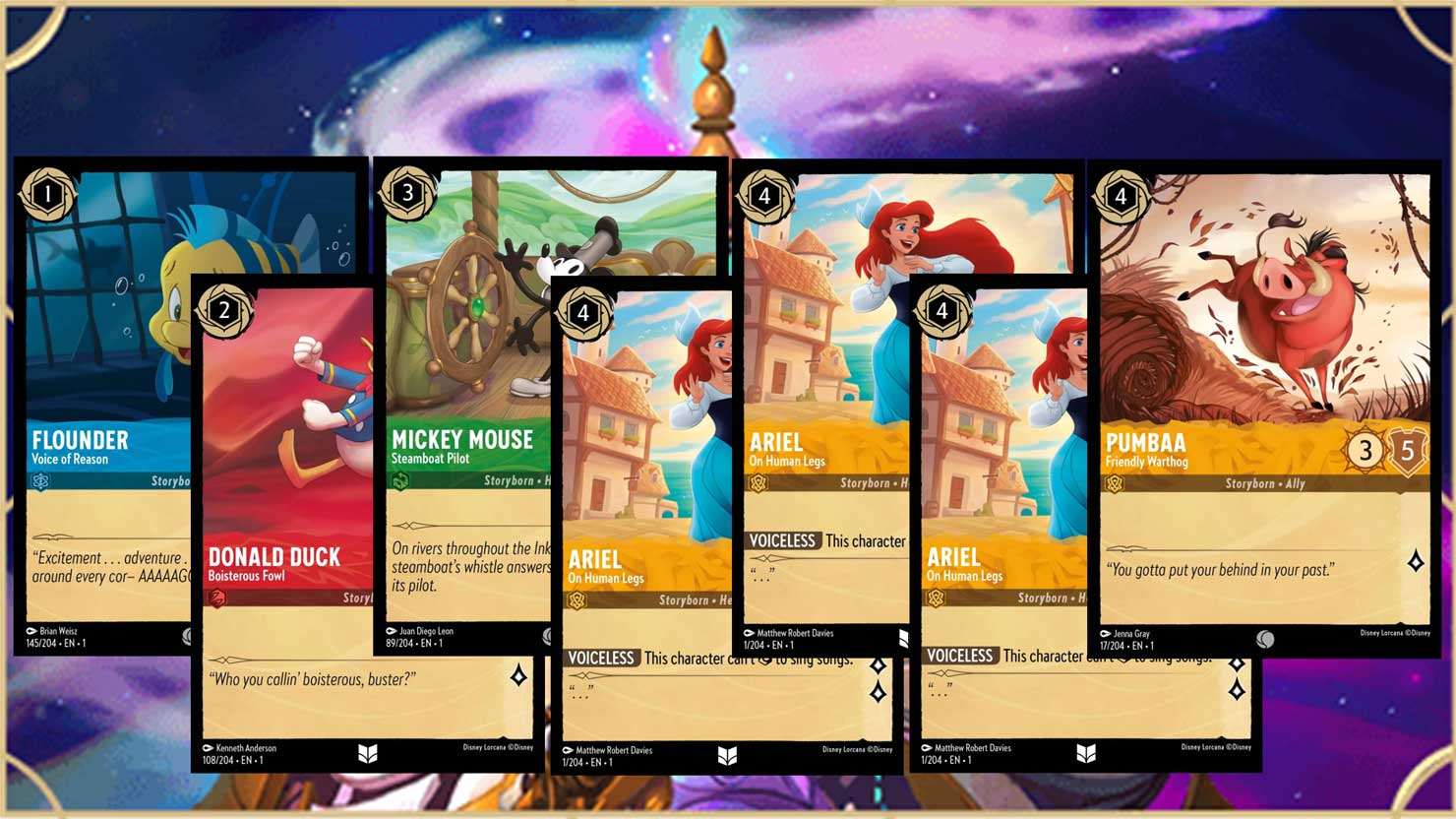
As another example, if my opening hand has a one-drop, a two-drop, a three-drop and four different four-drops, then I will usually bottom the worst three four-drops in the hope of drawing into a powerful five or six-drop, while keeping the cards that will ensure a perfect 1-2-3-4 curve-out.
Of course, these are simple examples. In practice, the details will depend on your deck and your opening hand. For example, if you built an entire deck around specific cards, then it can be worthwhile to mulligan aggressively towards them. Moreover, you have to pay attention to the risks of non-inkable cards - bottom some of them if your opening hand has more than two, and avoid aggressive mulligans if your deck runs too many (say, more than 25 percent) non-inkable cards. Yet so far, aiming for an ink curve has been my main driver for mulligan decisions.
Once per turn, players may turn a card with an inkwell icon from their hand into face-down ink, essentially becoming a land. In deciding which card to place into your inkwell, my main heuristic so far has, once again, been the desire to curve out. This means that before taking a first game action, you have to plan ahead, mapping out your first few turns. And in the late game, it’s important to note that you don’t have to add to your inkwell if you don’t want to.
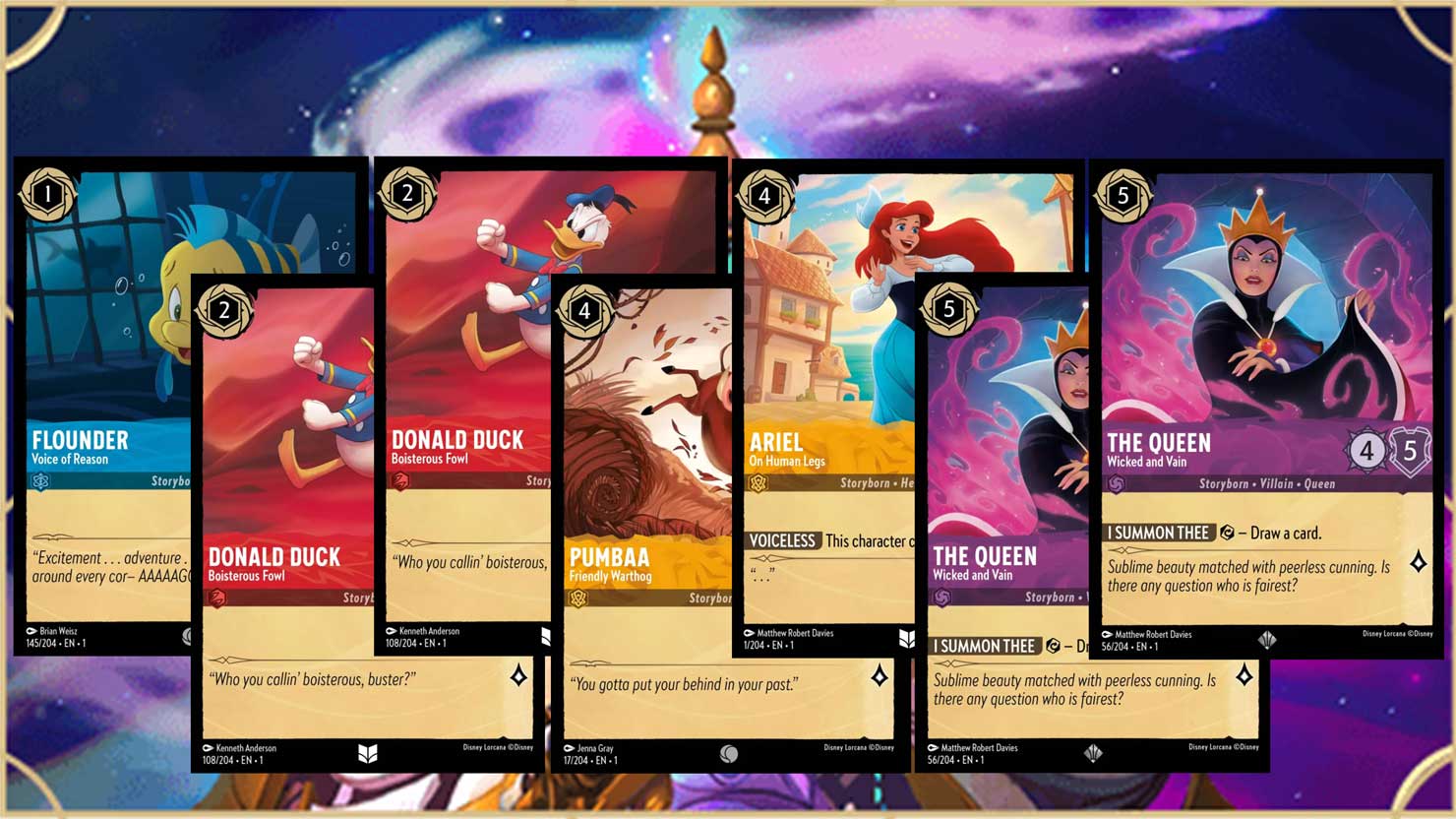
For example, if you’re on the play and your starting hand after a mulligan contains a one-drop, two two-drops, two four-drops and two five-drops, then I will usually start on turn one by inking the worst four-drop. Assuming that I add a card to my inkwell every turn and that five-drops are superior to four-drops, I will never have a good chance to play that weaker four-drop, so it’s the perfect ink fodder. The excess two-drop could still be useful because to fill a gap on turn three, and the excess five-drop can make for a solid play on turn six.

As another example, if at the start of turn six you have five cards in your inkwell and hold a two-drop, a three-drop, and a five-drop, then just cast your five-drop and don’t add anything else to the inkwell at this point. It’s definitely worth adding a card to your inkwell for the first five turns, but you don’t have to keep doing that forever. Unless your deck contains an abundance of six-drops or higher and card draw spells, you might be able to run off five ink for the rest of the game.
If, however, that five-drop in hand was actually a six-drop, then I’d generally just turn my lowest-cost card into ink. In any case, be careful not to set your hand face-down on top of your inkwell, as that will lead to enormous confusion. Keep your hand and your inkwell separate at all times.
Characters that have been in play since the start of the turn can turn sideways (exert) to either quest (gain a specified amount of lore) or challenge an opposing exerted character (have them deal damage to each other). Choosing when to quest, when to challenge, and when to do nothing made for deep gameplay decisions. My rule of thumb has been to only quest when ahead and/or safe. The game is not about gaining as much lore as quickly as possible - it’s about maintaining a board state that, over time, gains 20 lore faster than your opponent.
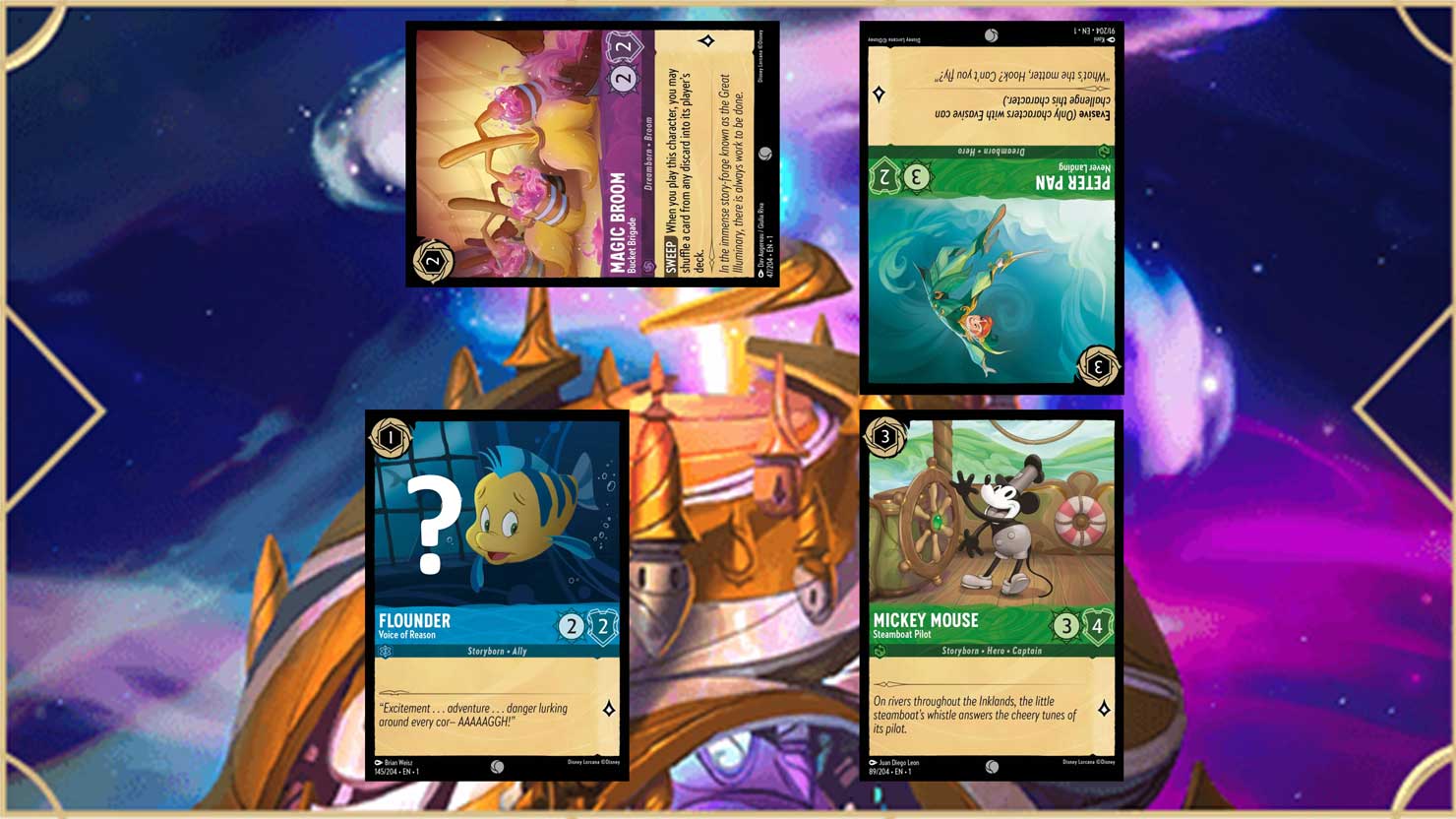
For example, suppose that on the draw, our opponent led with a 2/2 on turn two and a 3/2 evasive on turn three, questing with the 2/2 before passing the turn. We had a 2/2 on turn one, nothing on turn two, and will play a 3/4 on turn three. Also suppose that our hand is largely filled with powerful, expensive six-drops. What should we do with our 2/2?
In this situation, I would challenge their 2/2. Since they were on the play, they are ahead in the race by nature. Since they also added an evasive creature, they are the beatdown, and we need to play defensively. Moreover, since our hand is filled with six-drops, we should have the inevitability to win the game if it goes long. For this reason, we need to do everything to prevent our opponent from getting ahead on lore, which means challenging. In this game, challenging is the control strategy, while questing is the aggro strategy.
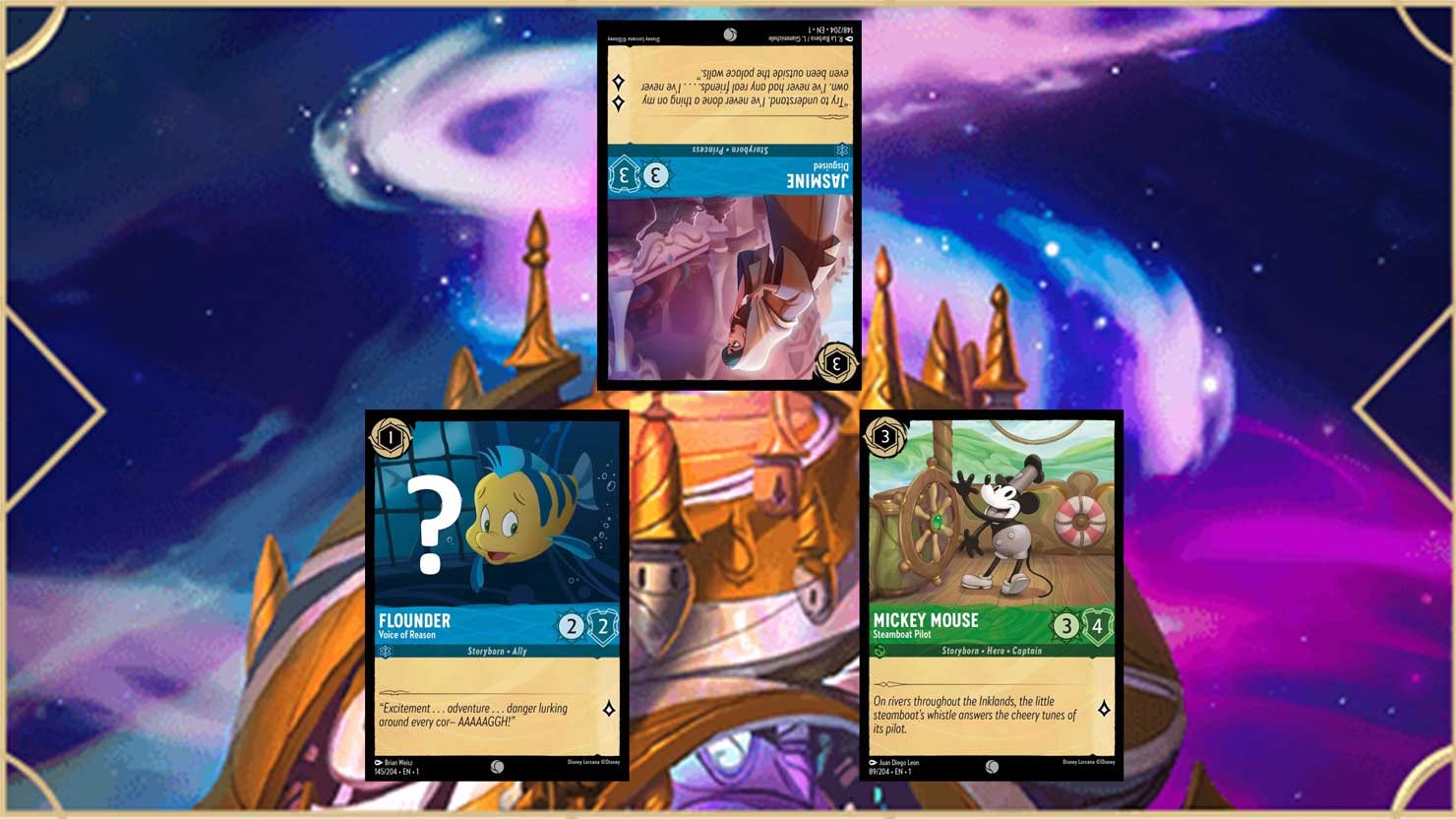
As another example, suppose that we are again on the draw with a 2/2 on turn one and a 3/4 on turn three. This time, however, our opponent’s first play is a 3/3 on turn three. What should we do with our 2/2?
In this situation, I would not quest and simply pass the turn, leaving our 2/2 ready and safe from being challenged by your opponent’s character. After all, if we had quested, then our opponent can challenge our 2/2 with their 3/3, giving them a favorable trade. Since damage persists in the form of counters, their 3/3 would effectively turn into a 3/1, but there is no real difference between a 3/3 and a 3/1 when we’d challenge it with our 3/4 on the subsequent turn. As a result, questing would give our opponent a free card, which is not worth the point of lore we get in exchange. By leaving the 2/2 ready, we can put it to good use on a later turn. Especially in the early game, board control is more important than rushing towards 20 lore, so don’t quest or challenge if you don’t need to.
The cards that impressed me the most from the starter decks were efficient removal spells, ramp spells, evasive characters and bodyguards. Characters that provided card advantage overperformed as well, and a character’s willpower appeared slightly more important than their strength or lore values. The games of Sealed Deck I played afterwards left me with the same observations.
The reason why I liked evasion and bodyguard so much is that these abilities deny the opponent the opportunity to make favorable challenges. It provides a layer of protection for your win conditions. So, don’t waste characters with evasion or bodyguard by sending them into a challenge or mulligan unnecessarily, and avoid using them as ink. Instead, put them in play and reap the rewards.
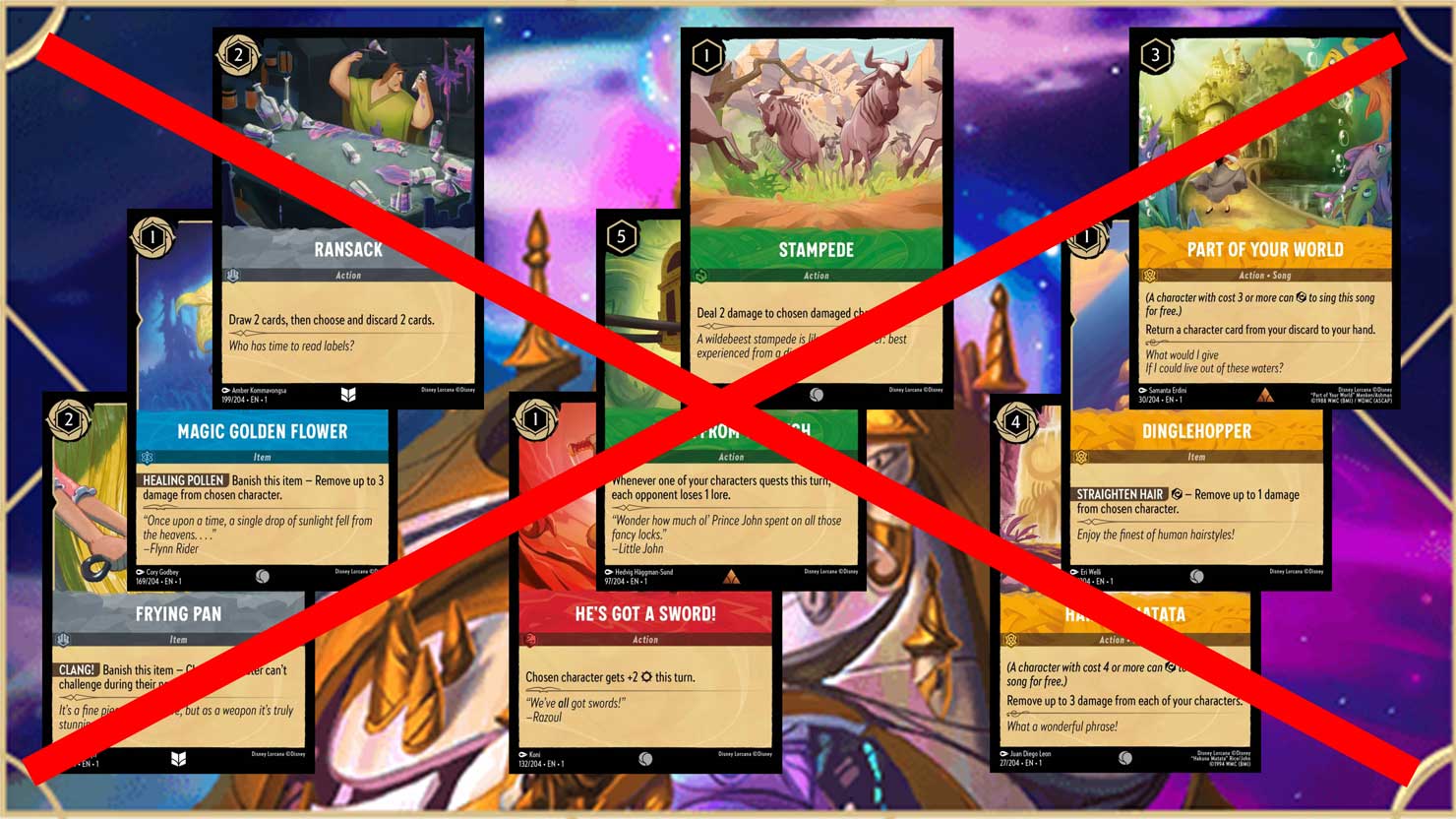
While the starter decks provided an excellent introduction to the game, I did feel they contained too many low-impact items and actions, too many one-drops and not enough expensive characters. If I were to upgrade these decks with pulls from booster packs, then I would shave some of these weaker cards, especially ones that cannot be turned into ink, and add more five-drops, six-drops and seven-drops. It doesn’t even really matter what they are, as long as they are expensive characters that can be turned into ink.
By making these changes, the resulting ink curve will make it more likely to spend all of your ink in the mid-to-late-game turns. In Magic: The Gathering Limited terms, high-cost inkable characters are like land/bomb split cards. Due to the way the ink system works, Lorcana decks can afford a more top-heavy curve than Magic players might be used to.
Below, I have some suggestions on which cards I would cut first, and next on the chopping block would be several one-drops.
Remember, Lorcana is fresh on the scene, and I'm still diving in. With only a few dozen games played, my early takes might be a bit off, but that's the thrill of new games, right? Even so, my tactics clicked for me, scoring me wins most of the time. So, here's hoping my pointers amp up your game too!